It’s been 30 years since I had any contact with sports, I was in high school in Melbourne during the mid 90s, we had one female Physical Education teacher, and the rest were male. Netball was only played by female students and the umpires were men, it was always Footy for the guys and netball for the girls. These days you have mixed teams in Netball and AFLW. However, we still see many sports with only male umpires and referees, for example Aussie Rules’ first female umpire at elite level occurred in 2016 which is quite recent. Fencing in Australia with a much shorter history has its own progression with female representative in the sport. But are we doing enough?
This month, I invited Fencing Referee Siobhan RICE from Queensland Fencing to talk about the importance of having more visibility of female ref in Australian fencing and how it has progressed since she started fencing at 9yo over 10 years ago.
Contributor: Siobhan Rice (Ref for QLD state and national comps)
Producer / Photographer: Ed Chiu
Date: August 2024
Additional photos of Siobhan fencing supplied by Siobhan Rice
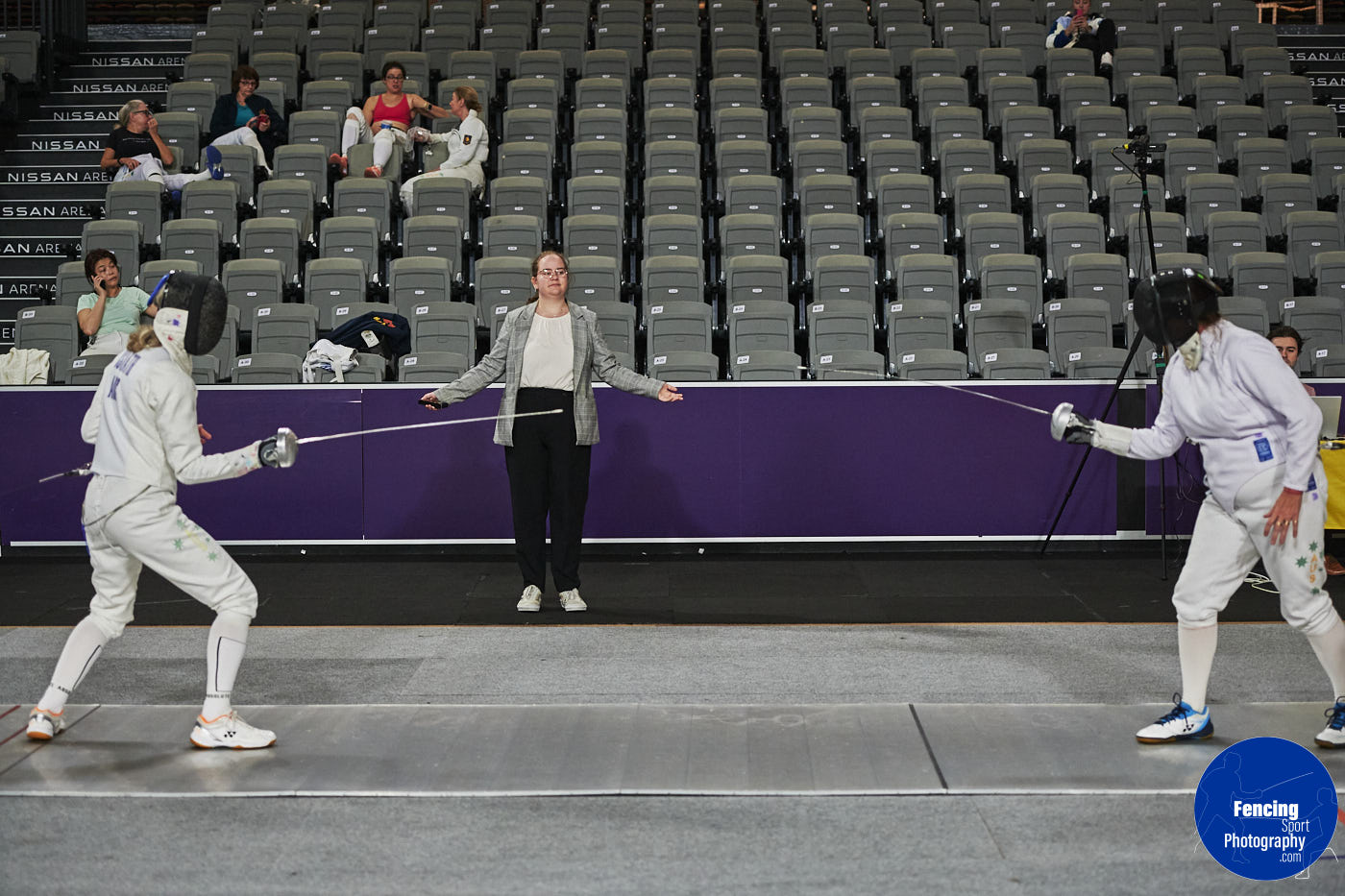
Ed: Hi, thanks for taking time out for Touchpoint. Can you please tell me about your background in fencing and what made you decided to become a fencing ref?
Siobhan: I began fencing at 9 when I moved to a new school and my mum knew the teacher in charge of fencing and signed me up to make some new friends. When fencing I had the privilege to compete around the world on several occasions. However during a competition overseas I ended up tearing a few of the tendons in my hand which meant fencing was no longer on the cards for me as an athlete. I still wanted to be involved in the community and so took up refereeing as a way to stay a part of the community that had become a massive part of my life.
Ed: Do you miss fencing? Do you have urges to pick up the blade and just fence given you have gone as far as competing overseas. I guess I have not fenced long enough to know if I have that connection like me with photography. I have been working as a photographer for 23 yrs full time, although some days I don’t want to touch the camera, but I am seeing things from a different perspective than people who does it as a hobby.
Siobhan: I miss some parts of fencing and I definitely miss the blade. I don’t necessarily miss the pressure and the competition though. I think I got sucked into a world with a lot of cliques and a lot of rivalries. It was so easy to compare yourself to others physically and mentally when in the competitive world. So I guess I don’t miss that part.
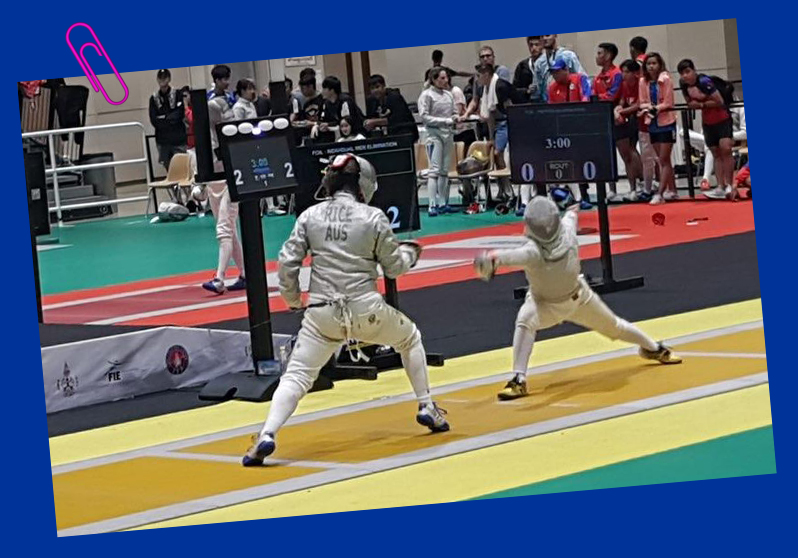
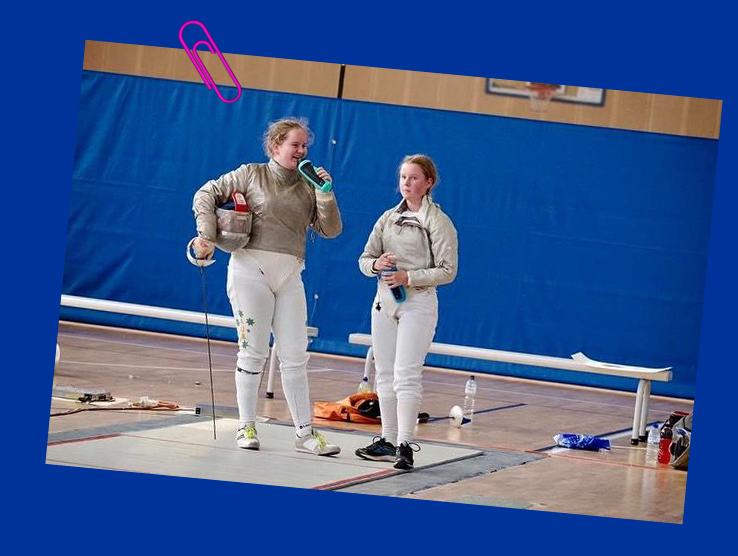
Siobhan continues But in terms of the actual sport and joke fun it is to hit a target and focus on the little details I miss. I found fencing an escape and a release and an outlet for me in the midst of a hectic work/study/personal life. I definitely went through a bit of an identity crisis when I was no longer training and competing because fencing as an athlete was all I had known since I was 9. But I think stepping back a bit and entering in a new light has helped me stay socially connected but helped me to realise the athlete life was not the right path for me.
“In terms of female representation in refereeing I definitely don’t recall many female referees when I was first coming into the sport, and definitely no female referees spoken of in a positive light.”
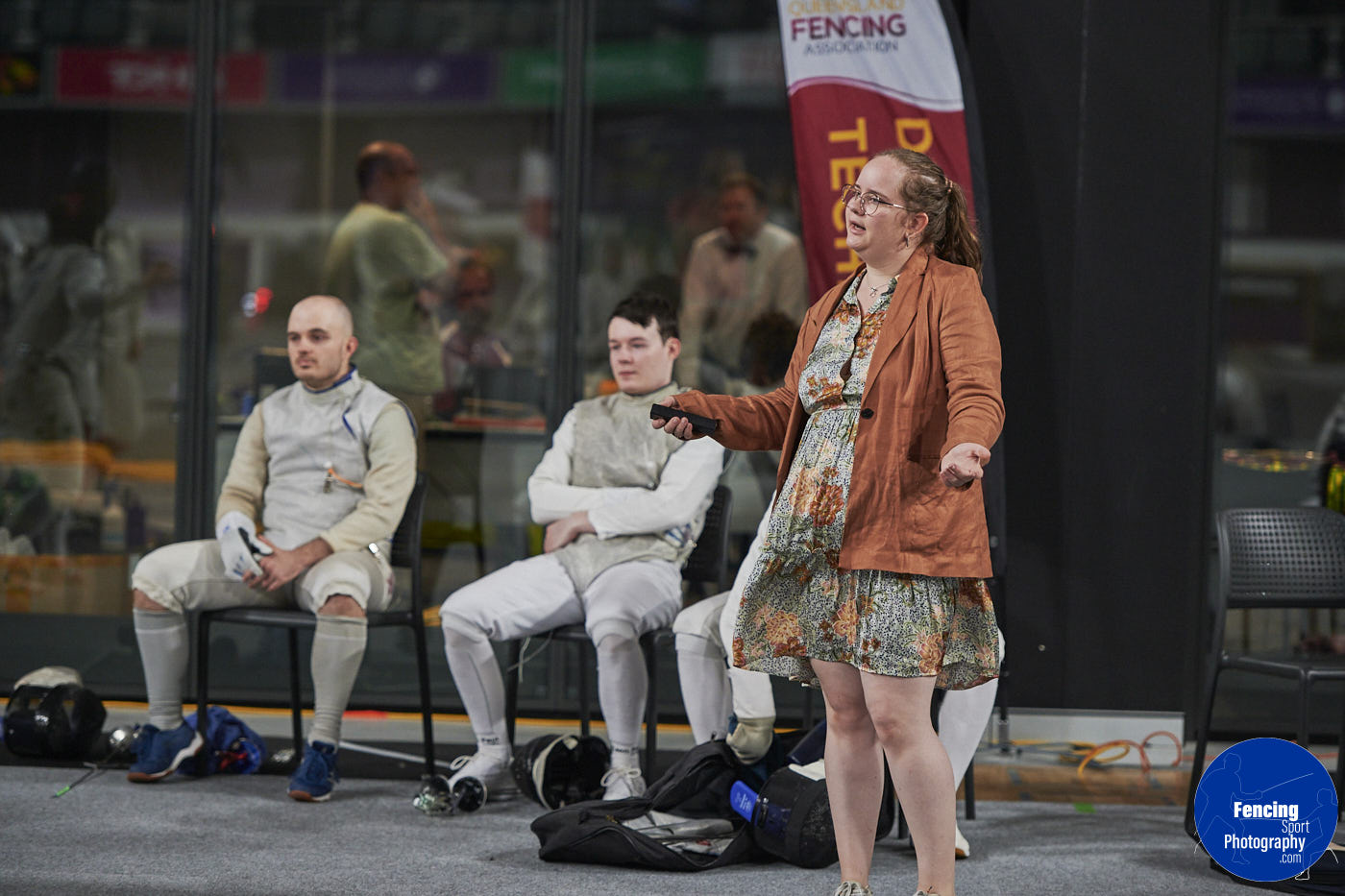
ED: Yes indeed, the pressure of competition especially when you invest so much into it.. Time, money and energy regardless of what age groups people started the sport. I think that is part of learning, growth mindset, recognising the weakness and improving on the techniques and skills then apply it.
So, let’s get back to you being the referee. Since you started the sport more than 10 years ago, you must have seen the development of referees? I want to know more about the equality in Australian Fencing.
Has there been a gender balance in refereeing?
Some sports are very gender biassed towards male, and still are – despite the fight for gender equality across Sports in general. However I also see sports as having diversity in gender for ref and I guess it goes back to how the sporting governing bodies and how they want the sport to grow in consideration of diversity, not just on the field but also people who work in it.
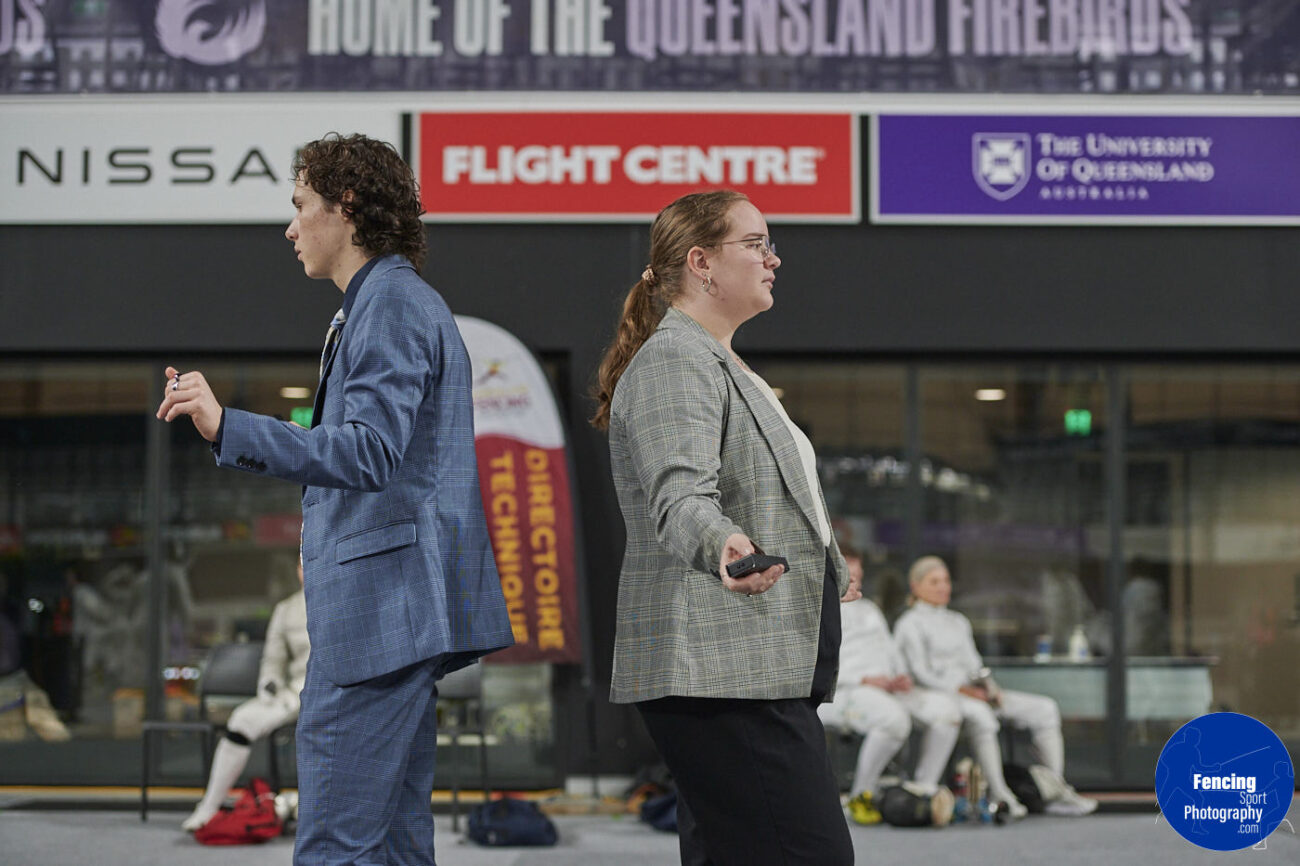
Siobhan : I think in terms of referee development I can’t recall much happening before 2022. That’s not to say it wasn’t occurring, but it wasn’t presented to me as an opportunity or as openly as it was in more recent years.
I think lately the AFF has spent a lot more time and energy developing their referees and now you will find that there are more dedicated referees and less athletes who referee on the sidelines compared to previous years. When I first started fencing all of the referees I can recall were either coaches or athletes who got pulled into referee because there was a lack of people to fill the gaps. I think it has only been in more recent years that I have seen dedicated referees within the national circuit.
In terms of female representation in refereeing I definitely don’t recall many female referees when I was first coming into the sport, and definitely no female referees spoken of in a positive light. I think much like the athletic side of fencing, refereeing too has had a very heavy male skew.
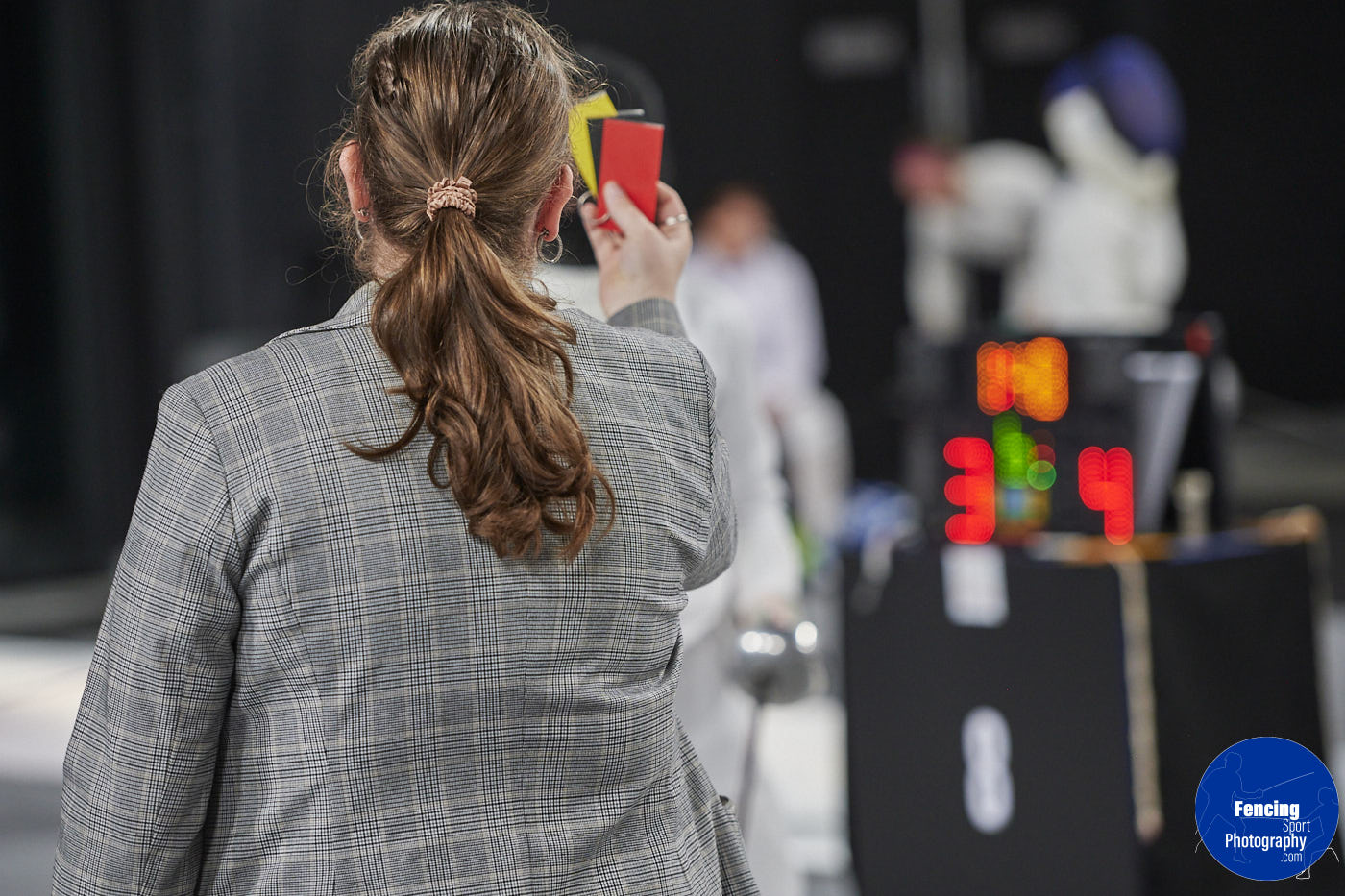
[Siobhan continues] I know within the Asian zone there is a bit of a push for more female referees to take international licensing exams and there are some incentives such as allowing additional entries into the exams if women are entered. This is of course a great initiative to encourage countries to push women to take these examinations, however I think there is still a severe lack of women in the refereeing world.
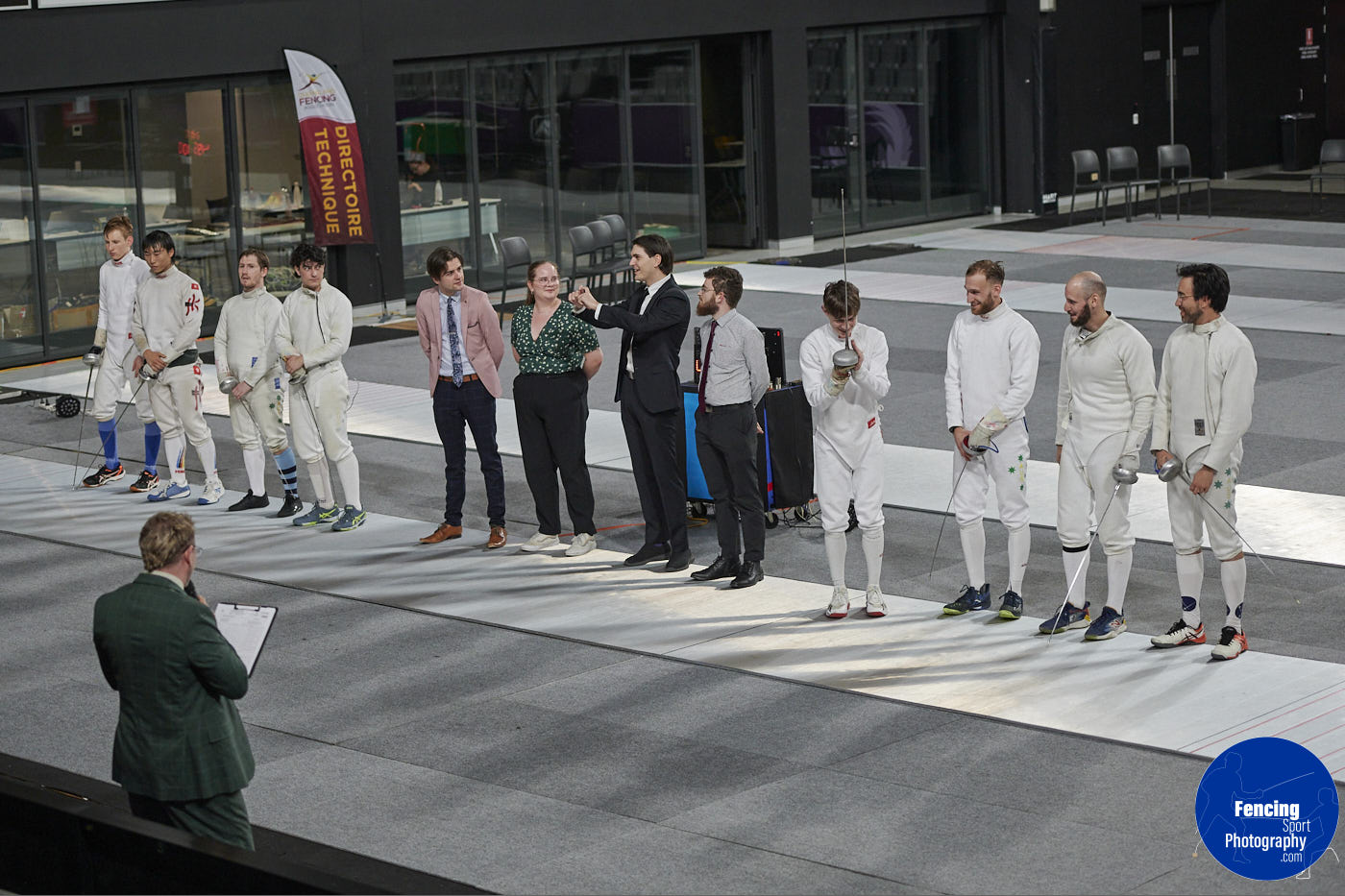
ED: I want to touch on the gender aspects of refereeing,
In sport, men and women perform differently in terms of physicality and I guess that is why the separation of male and female fencing and it’s not mixed but that’s a separate conversation.
What I am interested in is the emotion and psychology. And this can be recognised in different fields and professions, for example workplaces with women in leadership roles may bring in more fairness and less abrupt approach than a man who can sometimes act hastily.
In graphic design / designs in general there is a difference between genders in terms of design and interpretation to briefs – Masculine design produces more straight lines, sharp edges and feminine designs are often curved and slopes.
Does reffing in fencing come with different kinds of psychological factors, interpretations and emotions?
Siobhan: I think as a referee it can be intimidating as a female when you have men who are taller than you get into your face and yell at you calling you names. It definitely can be hard to navigate the emotional struggle of those experiences. It can also be difficult to navigate the fine line between being firm and being called a bitch. I have found I very rarely get treated the same as the male officials. It can be as little as the fencer not trusting your calls and requesting video, even if it is a less experienced official on video. Or as much as having men try and get physically in your face to yell at you.
Even refereeing the men and the women are different. In terms of what finer details you watch for. It is not comparable. As a female you get treated so differently.
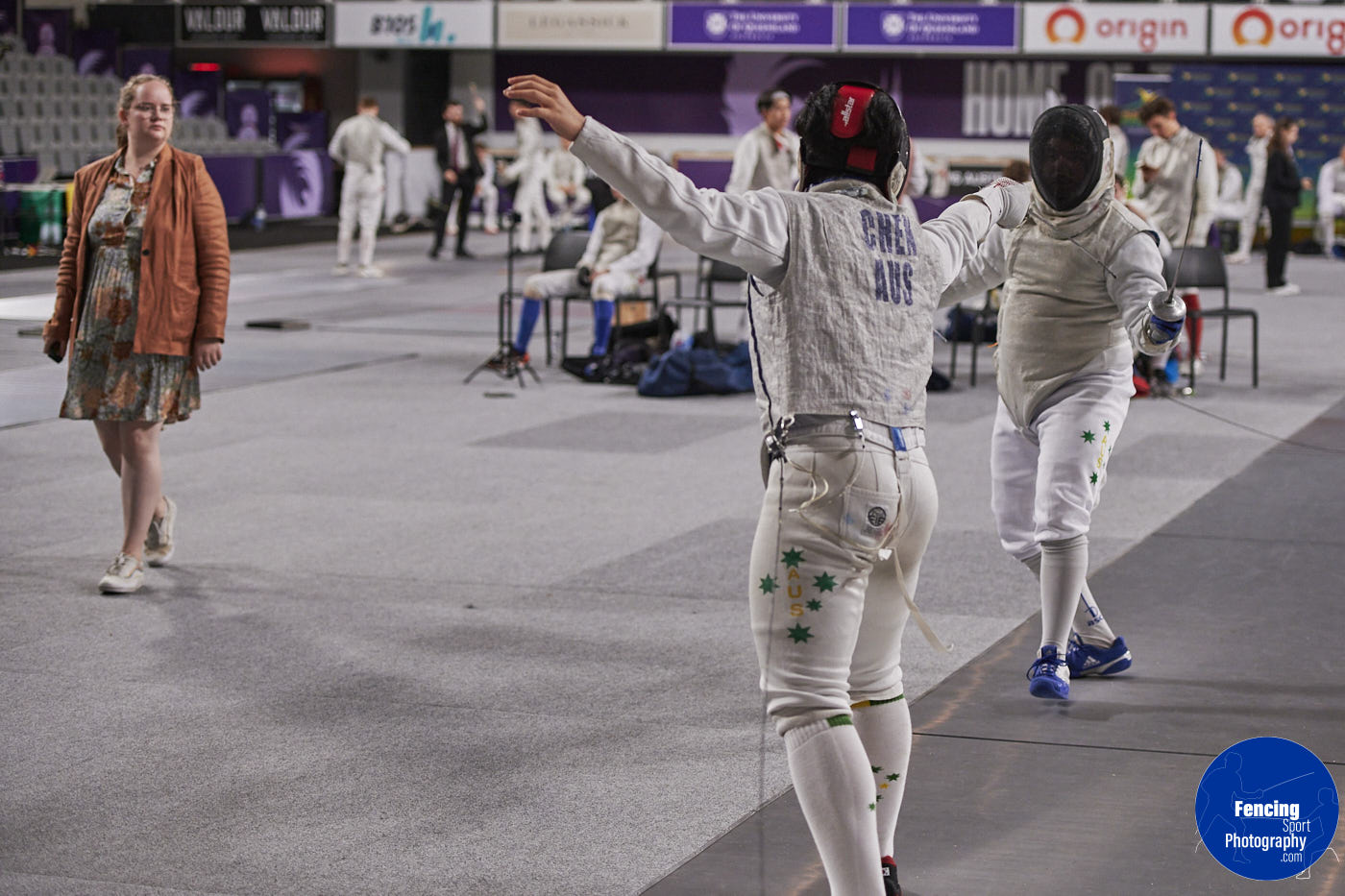
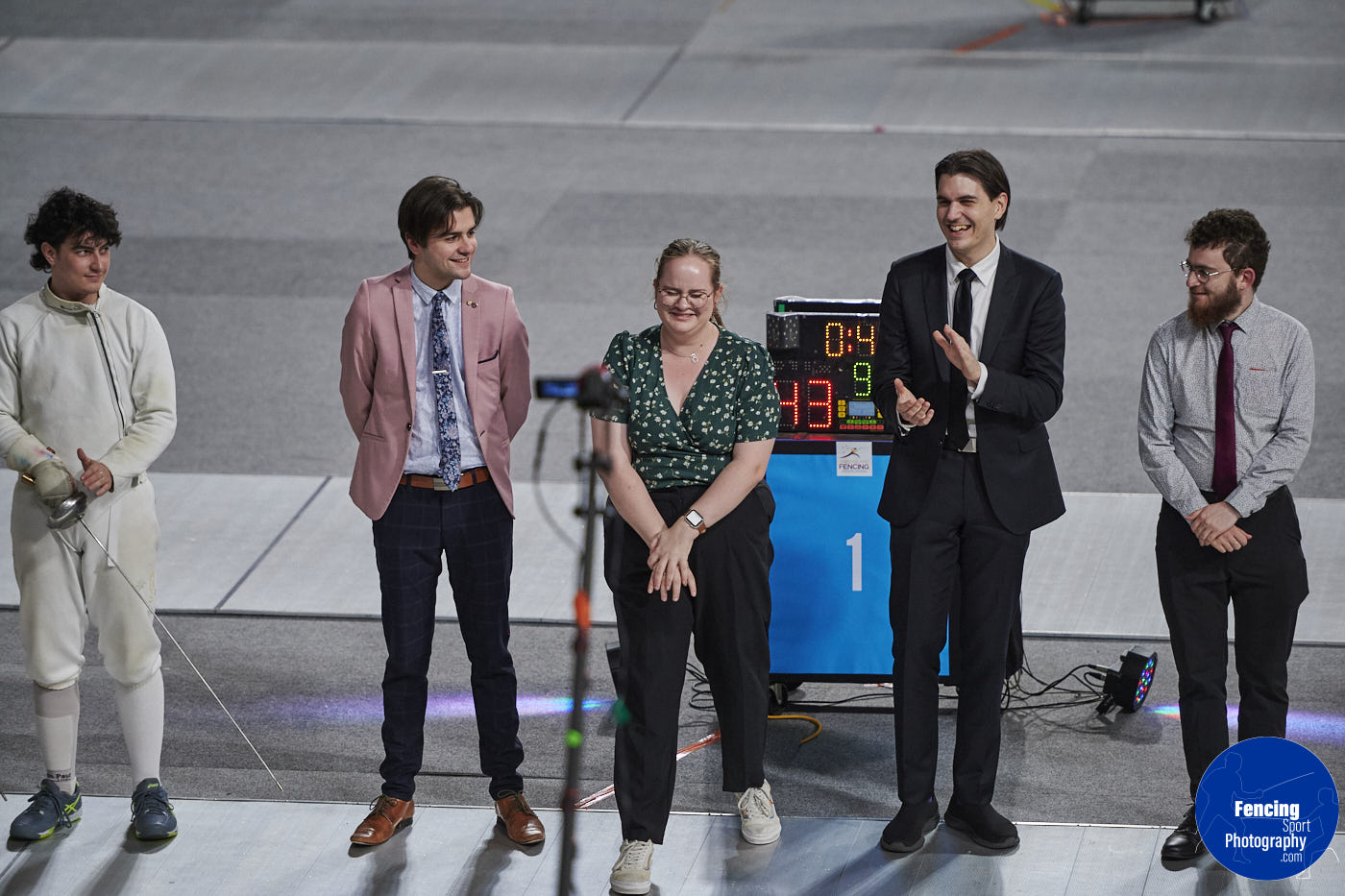
Ed: …and these fencers who don’t respect female ref .. are from all genders or just predominately male and young male?
Siobhan: I think it comes from all genders. But is definitely more common with younger males. I have noticed a positive shift generally towards respectful relationships, but there is definitely still room for improvement.
ED: Yes I have personally witnessed several confrontations, although I do feel they probably still challenge the male refs, but the tone is more dismissive towards female refs and more condescending towards women because their minds shift into combative mode.
Apart from stating the fact with Equality, there are also issues of respect, because when you have no respect towards someone, whether it’s gender, age group, sexuality etc, it reflects on the person. This needs to be taught from the ground up either from home with parenting and even in clubs and coaches. The younger fencers who grow up with the sport and I am not isolating just the male fencers, but all genders. Ultimately, they grow into the real world and there will be female educators, bosses and colleagues.
And it is definitely changing in a much more positive light which is amazing. Even within the sport itself it is amazing to see the number of female athletes increase. I recall times where nationally there were 5 women in an event. So it is incredible to see these numbers grow steadily.
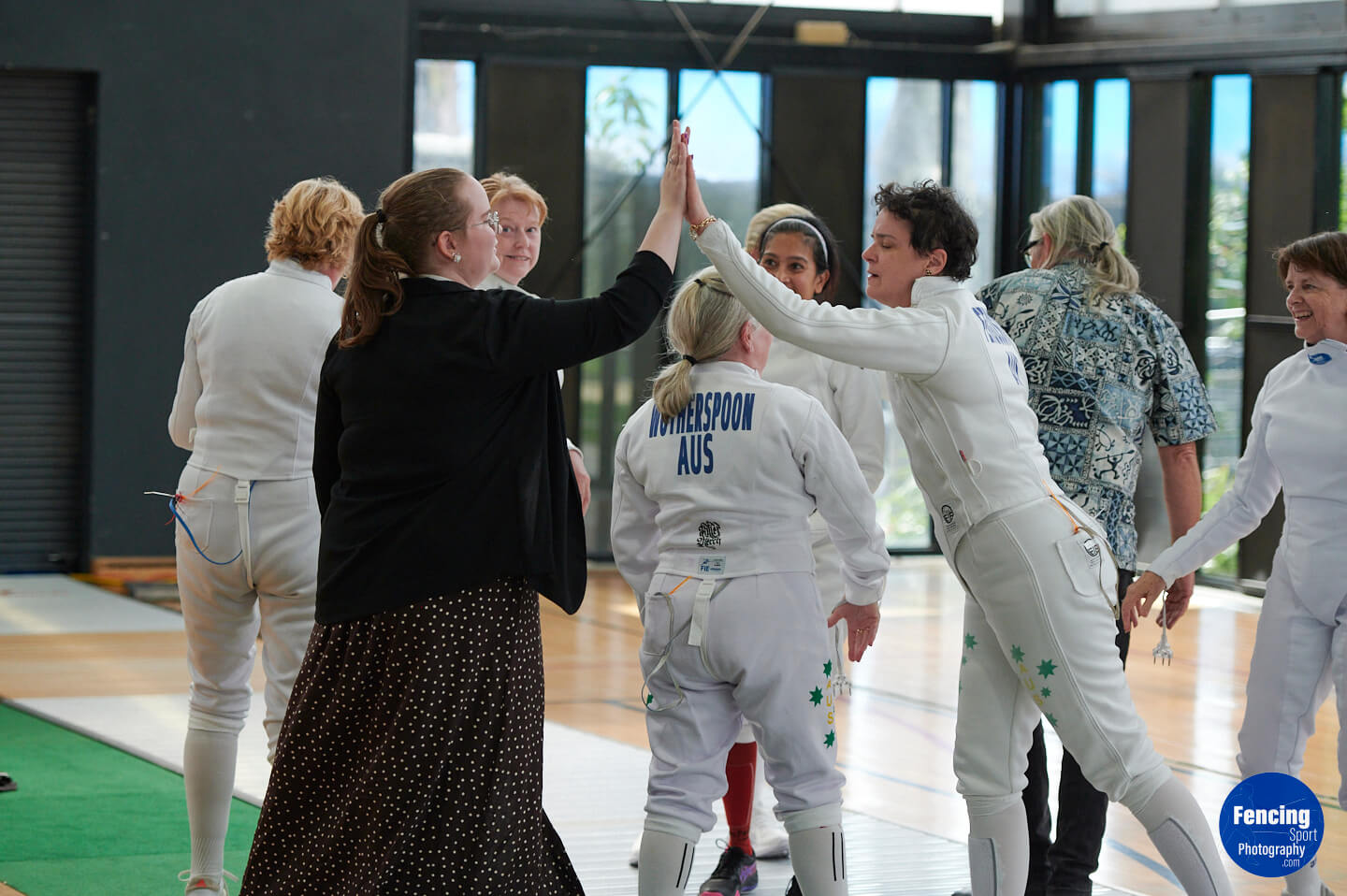
Ed: I understand that you studied education and now you are teaching. How does fencing support what you learn in your work?
It has definitely taught me a lot of patience and resilience. Working in a school getting challenging behaviours regularly you need a lot of creativity and problem solving which I think was helped a lot through fencing. Plus, it is always a fun fact to tell the kids that you used to fence.
Are there any plans to let the kids watch a comp in Queensland?
Unfortunately I don’t live near a fencing city currently. So probably not. But my class have seen old live streams of when I competed.
Recently I returned from Hong Kong after competing at the 2024 Asian Veterans and Children Fencing Championships, I experienced firsthand what Siobhan talked about in terms of the increasing number of female referees in the Asian Zone. There were indeed more female refs, although on a smaller percentage in compared to male refs. For 16 pistes across one side of the venue, there were consistently 6 female reffing across both veterans and children bouts.
As mentioned in previous post with Kai Becoming a Fencing Referee Can Benefit Your Fencing and Develop Skills on Decision Making, fencing clubs should encourage more fencers to learn how to ref or take up a reffing program that is available across Australia. Getting them excited about the job and identifying the benefits, such as
- Gaining self confidence
- Making better decisions – in life and in fencing
- Learn to gain perspective in everyday matters
- Looks great on CV, employers are always interested in unique skills
- Growth mindset
I come from a male dominated industry in commercial photography, the gender balance started shifting about 13 years ago for the Australian advertising photography industry means that more female is taking up photography in universities and courses then continue into the workforce. Starting a conversation with encouragement and education. It can be done.
If you want to know more about how to become a fencing referee, reach out to your fencing club or Fencing governing bodies in your state.

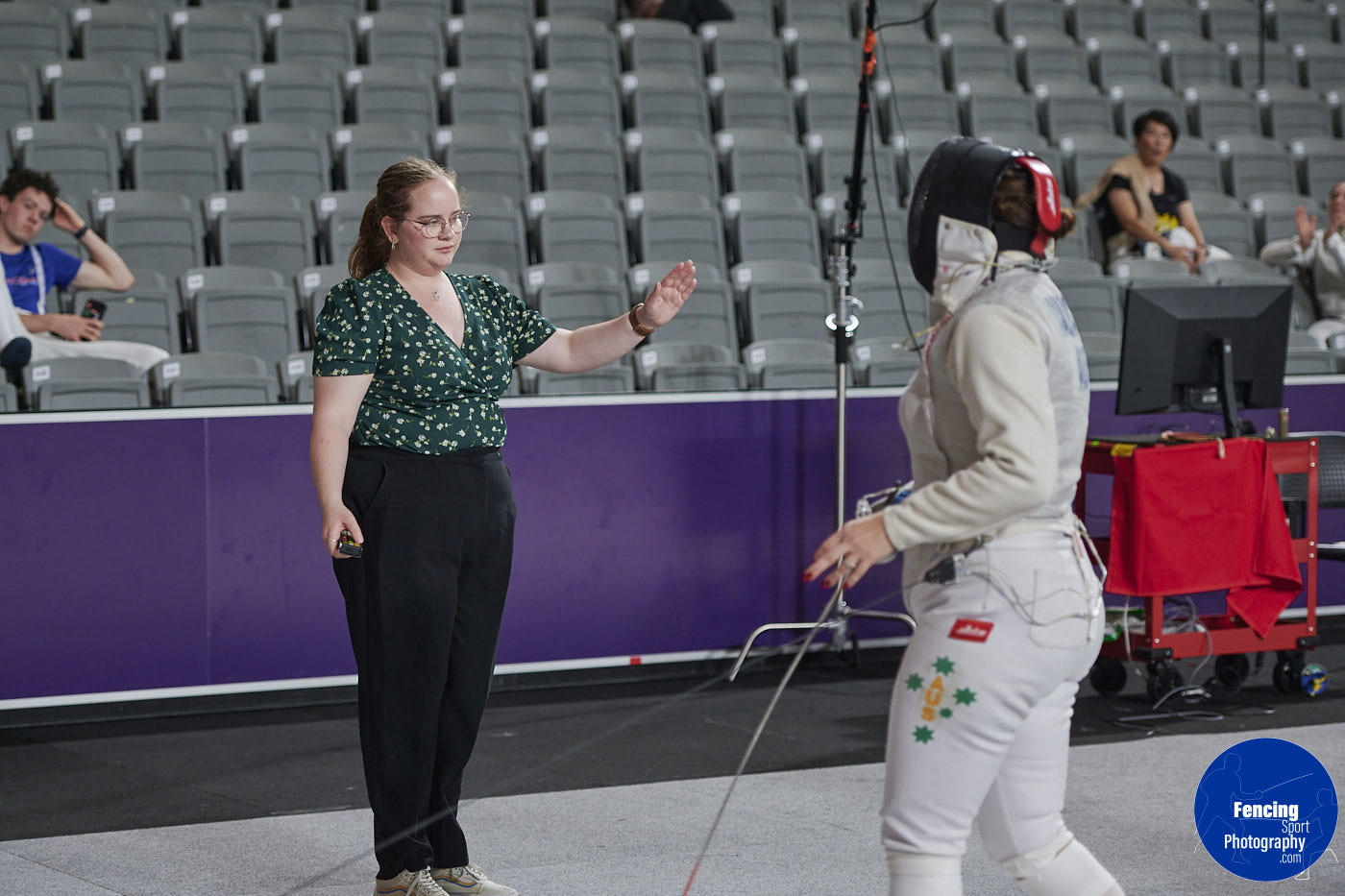
Leave a Comment: